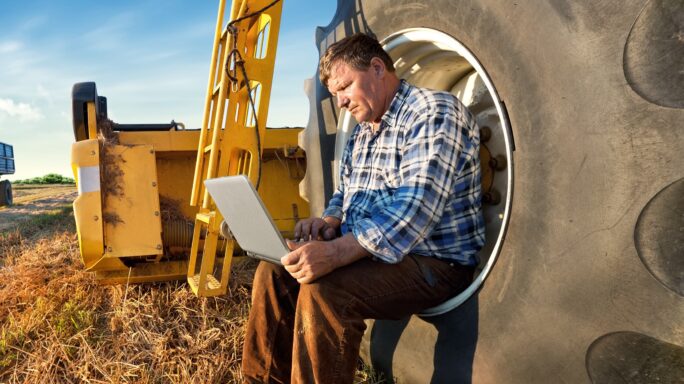Technology & Innovation
How accountants can tackle the climate crisis
Discover how accountancy practices can join the effort to tackle the climate crisis and achieve net zero targets.

Tackling the climate crisis is becoming a priority for more and more businesses. Yet many feel the challenge is daunting and over-complicated, and that their efforts wouldn’t make a real difference.
Sound familiar?
That’s totally understandable. But the truth is, progress will come from our collective efforts. Every single day, the choices we make really do add up.
The accountancy sector now has a huge opportunity to join the effort.
It doesn’t matter if you’re flying solo or running a practice, you can start to reduce the impact your business has on the planet right away. And it no longer has to be complicated or costly.
Let’s talk about net zero.
This article covers the following:
- What does net zero really mean?
- Why focus on net zero?
- How to reach net zero in a simple and cost-effective way
- What does success look like?
- Final thoughts on tackling the climate crisis
What does net zero really mean?
You’ve probably already heard net zero being used in the news or on social media, but let’s have a quick recap.
The term became the centre of climate change discussions after the 2015 Paris Agreement. Since then, it’s evolved and is now understood as this simple concept:
Create a global economy where the net emission of greenhouse gases equals zero.
This means countries, companies, and individuals should aim to add no more greenhouses gases than is being taken away from the atmosphere.
To strike this balance is to achieve net zero.
The agreement included a commitment to achieve this by 2050, which gives us a clear big picture goal. The trouble is, it lacks details that really matter when it comes to making it happen.
For example, how should we calculate business emissions? And where do we draw the line on which emissions our business is accountable for? Criteria like these need to be agreed per industry, as each operates differently and faces unique obstacles.

Some industries have defined a recommended approach that gives their businesses clear guidance on how to make consistent progress. In other words, they’ve set the standard of net zero for their industry specifically, and accountancy is no exception.
The Net Zero Accountancy Protocol offers the following definition of net zero from the Race to Zero Lexicon, which is a little more detailed than the concept mentioned above:
“Net zero occurs when an entity reduces its emissions following science-based pathways, with any remaining greenhouse gas emissions attributable to that actor being fully neutralised by like-for-like removals.”
This reveals two sides to achieving net zero.
The first is reducing emissions at their source. This could include switching to a renewable energy supplier for your premises or reducing business travel.
Once you’ve reduced as much as you can, the remaining emissions can be combatted with carbon offsetting. This is where you purchase carbon credits that fund greenhouse gas projects that remove CO2 or prevent it from entering the atmosphere.
Reducing emissions at the source should always be the priority, as preventing damage will always be preferable to repairing it.
A combination of both is still recommended because reducing emissions alone can’t realistically be done quickly enough if we’re to hit our 2050 target.
Why focus on net zero?
Reaching net zero by 2050 is our best shot at mitigating the damage caused by greenhouse gas emissions, and preventing a further rise in global temperatures.
“The best time to go net zero was 20 years ago. The next best time is now.”
Net Zero Now, April 2022
Though it might feel like we’re up against it, we can still make a difference if we start now. Responsibility lies with all of us, including governments, industries, businesses, and individuals.
UK accountancy practices are estimated to contribute nearly half a million tonnes of greenhouse gas emissions every year, according to the Net Zero Now Accountancy Initiative, equivalent to more than 100,000 cars being driven for a year.
Facts like this remind us of the huge ethical drivers to reaching net zero – from preserving the planet for our kids and grandkids, to preventing the extinction of plant and animal species.
Those are likely already motivating you, but there are also some very practical reasons to get behind the effort, including these benefits:
Lower operating costs
When you monitor how much energy you use a little closer, you’ll very quickly find areas where you can be more efficient.
Not only is burning less directly part of your goal to reach net zero, it also lowers energy bills.
Inspire innovation
The need to work more sustainably inspires out-of-the-box thinking.
As you come up with new ways to be more efficient, evolve how you use energy, and start using new products and services, other areas of the business will improve from the innovations you bring in.
Let’s say you introduce new software that reduces how often you need to meet clients in person and therefore helps you cut down travel emissions.
This software would also save you time, allow you to get more done, and even provide a convenient experience to your clients.
Meet client expectations
People now expect the businesses they interact with to be trying to make a positive impact on the environment.
Some clients will make conscious decisions about who they work with (and give their money to) based on sustainability factors.
Consumers will even switch brands based on this, as well as recommend others that are doing the right thing.
By working towards net zero, you demonstrate these expectations are being met.
Keep people for longer
Researchers for the Net Zero Accountancy Protocol found that employees in companies with strong sustainability programmes saw higher levels of morale and greater loyalty, as well as less staff turnover.
You’ll also notice improvements in employee engagement, including better alignment, discretionary effort, advocacy, and pride.
Change brand perception
Once you can confirm that you’ve taken actions towards being a more sustainable practice, you can begin to communicate this to the world.
Official certifications validate your efforts and allow you to demonstrate that you care about hitting net zero.
As long as your communications are factually based and provide transparency about your procedures, this can be a powerful way to change how your business is perceived.
How to reach net zero in a simple and cost-effective way
Despite the urgency and business benefits of net zero, very few small or medium-sized enterprises (SMEs) in accountancy or any of the professional services have made a serious commitment to it.
This is often because they feel they lack the resources, aren’t sure exactly what to do, are unaware of what net zero should mean for them, or a combination of all three.
The Net Zero Accountancy Protocol, certificate, and accompanying toolkit provide deep guidance that will help you stay on track to net zero.
But here are three actionable tips that our partnership has revealed:
1. Simplify the process
Do everything you can to simplify the process of reducing emissions and carbon offsetting.
This starts with understanding what you should be aiming for, which is made easy in the Net Zero Accountancy Protocol.
It covers everything from what targets to set, how to measure progress, what actions to take, how to validate what you’ve achieved, and how to communicate it.
2. Start with the big ones
Improve your knowledge of your business’ direct, indirect and value chain emissions. This shows you the biggest reduction opportunities and shows you where to start.
For example, you may discover that the amount you travel creates more emissions than powering the office.
In this case, putting a cap on how many miles your business does and committing to more video calls could reduce this very quickly.
3. Get clients on board
Once you’ve made progress on net zero, guide your clients to do the same by evolving the ways you work together.
Some will be on board, and others won’t. The best approach is to avoid claiming to be an authority on the subject.
Instead, just share how your journey is going, and how you’re happy to help others who feel the way you do about it. Clients that understand this is a priority for you will be open to shifting ways of working.
What does success look like?
To track success, you need to set regular targets.
This is another reason that industry standards are needed, so you know what’s deemed realistic, achievable, and ambitious enough.
This starts with a base year of activity, which you can use to set initial targets and see how your first couple of years go. This’ll help you map out time scales and create a plan for your net zero journey.
It’s worth mentioning that the targets you set should be what’s known as science-based targets (SBTs), which are specifically developed in line with climate science and the level of decarbonisation needed to limit global temperature rise.
To give you an idea of ambition, your target should represent at least:
- An absolute greenhouse gas (GHG) emissions reduction (all scopes of the Net Zero Accountancy Protocol) of at least 30% over five years.
- An absolute GHG emissions reduction (scopes one and two of the Net Zero Accountancy Protocol) of 50% by 2030.
You should then remeasure and report your progress each year. For context, scoring below 65% of your annual target means you’re off track to hit the above, so you should reassess your approach and get more support.
Successfully demonstrating progress towards these targets each year will earn you an official certification that reflects your achievements and intentions.
This signals leadership in environmental issues, differentiates you from competitors, and meets the demands of clients who want to work with sustainable practices.
Final thoughts on tackling the climate crisis
The fight against the climate crisis will always be a tough one. But if we pull together, every business—including accountancy practices–can contribute towards progress.
At Sage, we’ve still got plenty of work to do on our own journey to net zero. The advice shared here is what we’ve learnt so far by collaborating with organisations such as the ICAEW, ACCA, AAT, Good Business Charter, and Net Zero Now.
There’ll be plenty more of this learning to come, and we hope that sharing advice with you along the way will be useful for your practice.
After all, when it comes to tackling climate change, working together is what will make the difference.







Ask the author a question or share your advice